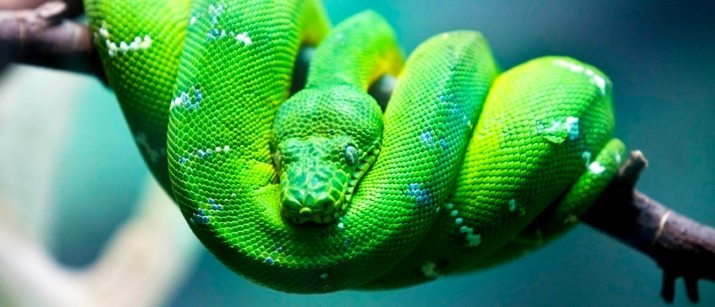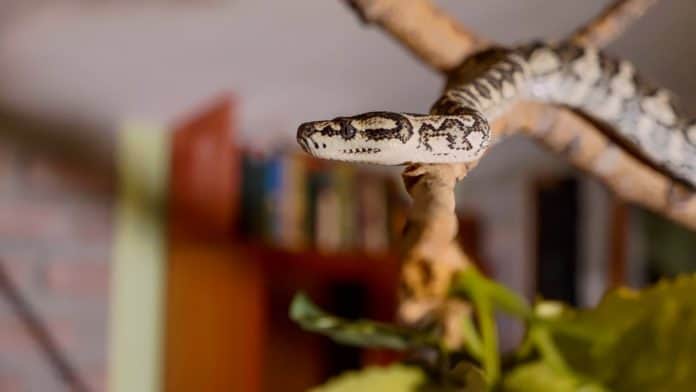Snakes can make great pets for the right person, but they require a lot of care. If you’re thinking of adding a snake to your family, here are some tips on how to take care of him or her. Snakes need a warm, dry place to live, so be sure to provide them with a good habitat. They also need food and water, and plenty of UVB light. Be sure to never touch your snake’s mouth – they might bite! With the right care, snakes can make wonderful pets.
Bringing your first snake into your family requires preparation, and the certainty that everyone else in the family will be comfortable with the newcomer. Is there anyone in your family who might be afraid of snakes? Are you renting a home? If so, check with the landlord about whether pet snakes are permitted.
Snakes are carnivores that eat their prey whole. Will the storage of the food items be a problem? Think about these things before deciding on a pet snake.
ESSENTIAL EQUIPMENT
A pet snake needs an enclosure, and a hidey-home inside the enclosure. Unlike enclosures for iguanas, fish, hermit crabs, birds, and horses; bigger is not better for a snake enclosure. Small snakes become anxious when faced with a home that is too big. Generally speaking, arboreal snakes need tall enclosures and ground-dwelling snakes need wide ones. Choose a variety of snake before shopping for a terrarium, but buy and set up the snake home before you buy the snake. You’ll see why in a moment.
Pet stores which sell reptile and amphibian supplies sell an assortment of excellent terrariums with covers (‘canopies’) designed for these animals. Choose one for your snake, and then pick out substrate materials. These are the things that line the bottom of the tank. There are sands and gravels and mulch which can closely replicate the snake’s natural habitat. These are ideal. Several layers of newsprint can also get the job done. It is easy to keep the newsprint clean and dry, and it is considerably cheaper. However, the closer to a natural habitat you can manage, the healthier your snake will be in the long run. Choose the rocks, climbing branches, vines, and so on according to the kind of snake you have chosen. The small ground-dwelling pythons need rocks and a climbing branch. Some other kinds need lots of branches and vines to climb on and hide in.
All snakes need a hidey-home. This might be a cave made of rock, or a piece of clean cardboard that the snake fits under. She needs a place where she feels safe to rest and relax.
Some snakes will need an ultraviolet-B (UVB) light. Some won’t. Some will get along nicely with half an hour of unfiltered sunlight each day. Investigate the details of your variety’s needs. All snakes will require a basking light. Position it over a nice basking rock or branch.
You’ll need an assortment of thermometers and hygrometers (devices that measure humidity): some for the floor and some for the walls of the terrarium. Never, ever believe the thermostats.
All snakes should also have some under-tank heating. You need to be careful here: You don’t just stick a heating pad under the tank, turn it on, and ignore it. It needs to be small enough to provide heat to only part of the floor, under part of the hidey-home. The idea is to provide what is called a “heat gradient”. That means that one section of the floor under a hidey-home should be a specific temperature. Let’s say, for example, that the ideal temperature for your snake is 85F. Another spot on the floor under the hidey-home should be a little warmer, at 87F, and still another should be 82F or 84F. Yet another section of the floor outside the hidey-hole, should be as cool as 71F-75F, and unheated. This way, the snake can regulate her body temperature by moving around. Her ideal temperature should be available in her hidey-hole.
Don’t rely on the basking lamp for all your snake-heating needs. It won’t work. Also, don’t go by the thermometers on the wall of the tank, either. They won’t tell you how warm or cold the floor is. Track the floor temperatures, air temperatures, and humidity several times a day and a few times per night for at least a week, before putting the snake in her new home. If you get this wrong, your snake will suffer.

EXERCISE
Pet snakes do not require much in the way of exercise. Allow her to do her thing, with proper climbing equipment available, and she’ll be fine. Some of the larger snakes like to have a swim in a safe wading pool from time to time.
FEEDING
All snakes are carnivores. They eat meat. In fact, they eat their meat whole, with all the bones and innards still inside. Many types of pet snakes eat mice and rats. Some eat amphibians other reptiles. The tiniest ones might live on large insects.
Fortunately, many pet snakes will accept dead prey. If yours does, consider keeping a separate small freezer for what are delicately called “prey items”. Dead mice and rats of various ages can be purchased in frozen packages through pet supply stores and directly from people who breed “feeder” mice. For health reasons, it is best to keep your snake’s dinner separately from your own foods. Depending on the snake, she might scarf down three or four at one meal, or she might only eat one. You’ll need to keep half a dozen on hand, in any case. Try starting with prey items that are about the same size around the middle as your snake is.
If your snake won’t touch dead prey items, try wiggling the meal a bit, to make it move. Also, try putting a piece of fabric over the tank as a “privacy curtain”. Sometimes one or both of those will do the trick.
If that fails, you might need to feed your snake live prey. This is more complicated, and not for the faint of heart. You’ll need to watch the snake hunting and killing the larger prey, because it is dangerous to the snake to leave an adult rodent alone with her. The panicked creature could injure the snake with its claws and teeth.
Clean water is important for snakes, just as it is for other animals. Clean and refill her water bowl at least twice a week.
GROOMING
Grooming is most important when your snake sheds her skin. If the temperature and humidity are right, and if all goes well, she will take care of this herself. Usually, a snake will shed once a month or so. Expect the process to take upwards of a week. If there are any problems, or worse- she hasn’t shed in a long time, she might need help.
A common cause of sloughing problems is dry air. Raise the humidity in the tank, and add a box partially filled with dampened paper towels, moss, or other soft substrate material. This might be enough to solve the problem. A little bit of gentle rubbing under the chin might also help. Are there enough items in the tank for the snake to rub on? She needs some smooth rocks and branches for this. After all, she doesn’t have hands.
At this stage – having tried the dampened paper towels, raising the humidity, and providing rubbing places – if your snake is still not able to complete her sloughing, take her to the veterinarian.
HOME ENVIRONMENT
A good home environment for a snake is one where she has enough time to herself that she can relax and digest her meals, but where she is tended appropriately even after the novelty of a pet snake has worn off.
HANDLING
Many pet snakes learn to tolerate being handled, but you should not even attempt to try hand-taming her until she has successfully eaten at least four meals in her new home. Wait until there is no bulge from her meal before trying to touch her. Start slowly, and place both hands under her belly to support her weight. Only handle the middle third of her body, unless a veterinarian instructs you to do otherwise. There are some medical reasons to hold her head or tail, so if the vet tells you to (for example, for cleaning the snake’s face), go ahead. In these cases, support her body with your other hand.
REGULATION & LICENSING
In the US some states might require a license to own a snake. Each state has a different set of regulations governing reptile ownership so it’s important that you understand the requirements set down by your local authority. You can use this article as a guideline.
If you are considering a move interstate in the future be sure to check the license restrictions for keeping snakes in your destination state. The classification systems vary significantly between jurisdictions and a snake that is legal in your home state may not be legal or require a very different license type in another state. The last thing you want is to have to say goodbye to your snake because you are no longer able to keep him.
WHERE TO NEXT?
What is the next step? If you’re still considering a snake, find out whether your housing arrangements allow for them. Do you live in a rental flat? Check with the landlord. Go to the licence site that was mentioned above, and check out the requirements. Then read about the kinds of snakes that are legal with a beginner’s licence. Is one of these right for you?
Pick a species and buy a terrarium of the right size. Set it up, and check the temperatures and humidity for a week, to make sure the snake will be safe. Then it will be time to bring home your snake.









